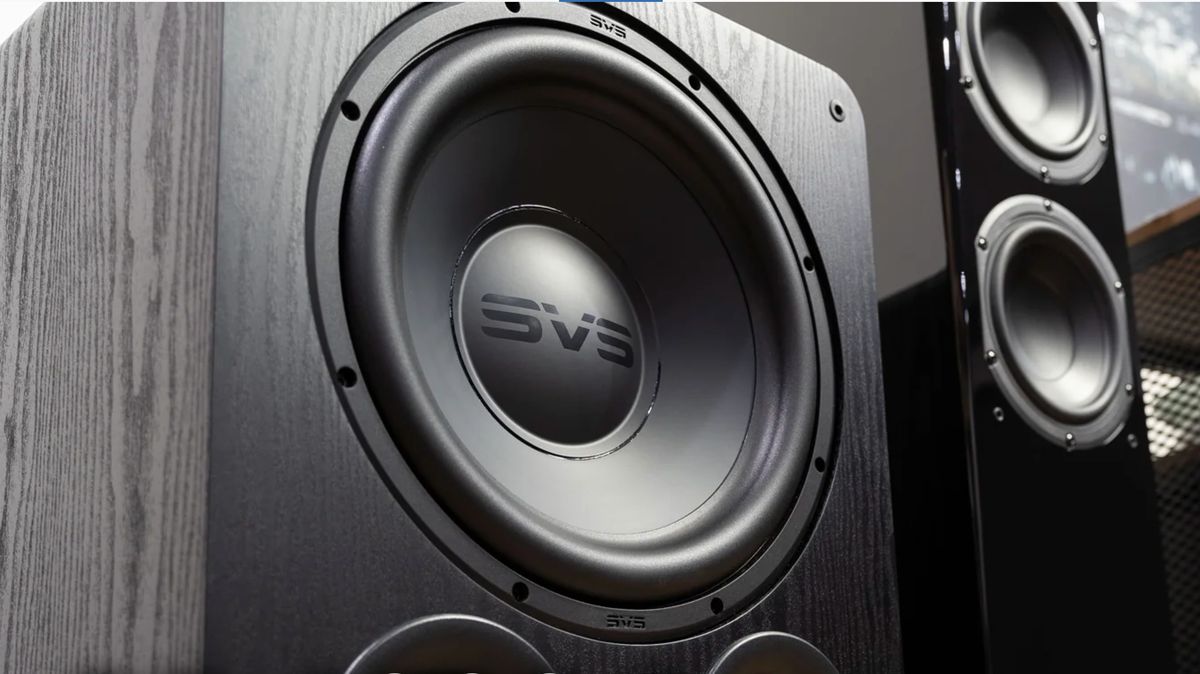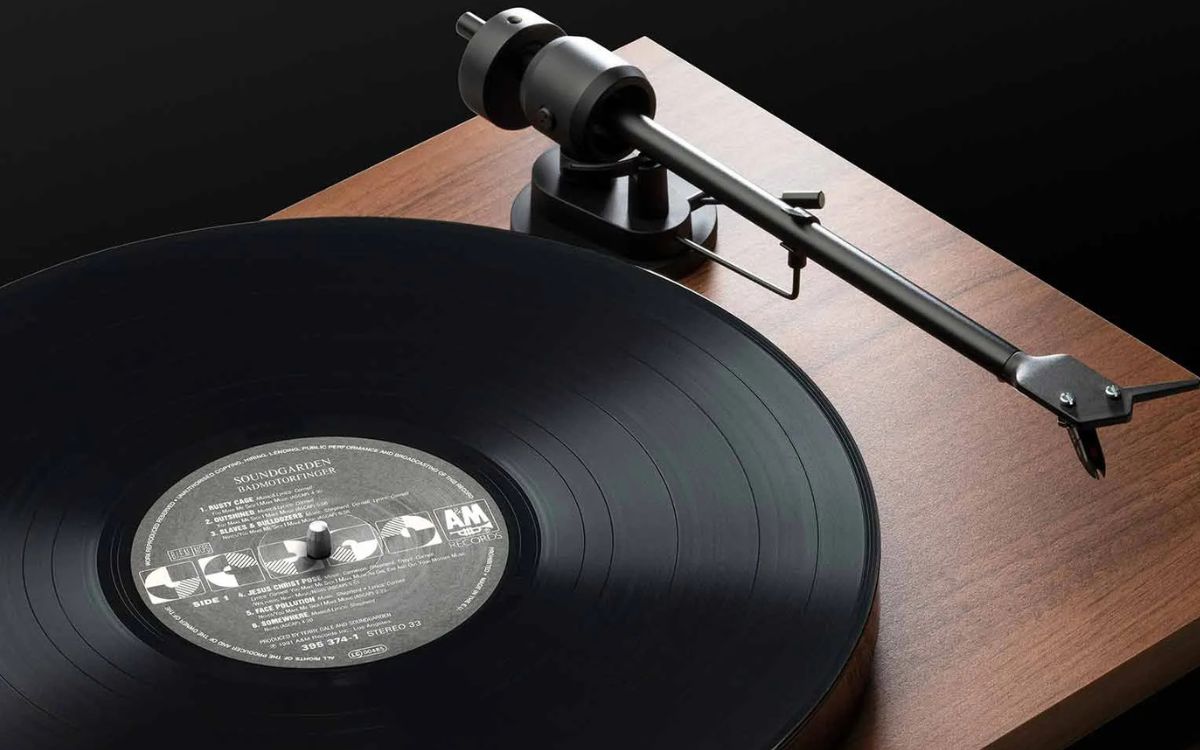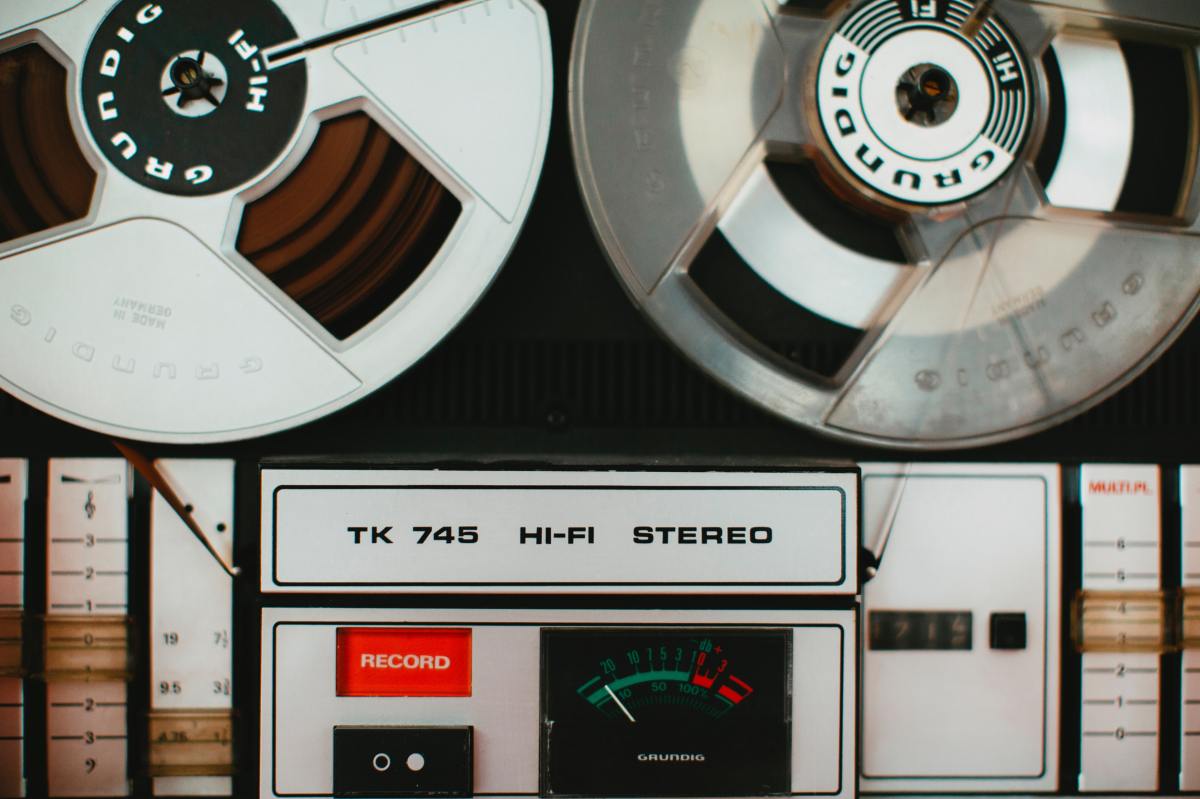Home>Instruments>Bass>How To Get Better At Bass


Bass
How To Get Better At Bass
Modified: January 30, 2024
Learn how to improve your skills in playing bass with our expert tips and techniques. Enhance your bass playing abilities and become a better musician with our comprehensive guide.
(Many of the links in this article redirect to a specific reviewed product. Your purchase of these products through affiliate links helps to generate commission for AudioLover.com, at no extra cost. Learn more)
Table of Contents
- Introduction
- Selecting the Right Bass
- Proper Finger Technique
- Understanding Bass Scales
- Developing Rhythm and Timing
- Mastering Bass Grooves
- Practicing with Backing Tracks
- Expanding Your Bass Vocabulary
- Improvisation Techniques for Bass Players
- Utilizing Different Playing Styles
- Connecting with Other Musicians
- Conclusion
Introduction
Playing the bass guitar is a rewarding and exciting endeavor. Whether you’re a beginner or already have some experience, there are always ways to improve your skills and become a better bass player. The bass guitar is a crucial element in any band or ensemble, providing the foundation and groove that drive the music forward. To truly excel on the bass, it’s essential to develop a deep understanding of the instrument and hone your technique.
Throughout this article, we will explore various techniques, practice methods, and tips that will help you on your journey to becoming a better bass player. We will cover everything from selecting the right bass guitar to mastering different playing styles and connecting with other musicians. By incorporating these strategies into your practice routine and embracing a growth mindset, you can enhance your bass playing abilities and take your musicality to new heights.
Before we dive into the specifics of improving your bass playing, it’s important to emphasize the significance of consistent practice. Like any skill, mastering the bass guitar requires time, dedication, and patience. Make it a habit to set aside regular practice sessions, no matter how short, and focus on specific goals. These goals could range from learning a new song or technique to improving your overall speed and precision. Remember, progress comes with persistence.
Now, let’s embark on this musical journey together as we explore the essential steps to becoming a better bass player. Whether you dream of playing in a band, jamming with friends, or simply honing your craft for personal enjoyment, these tips and techniques will guide you along the way. So, grab your bass guitar, tune those strings, and let’s get started!
Selecting the Right Bass
When it comes to playing the bass guitar, selecting the right instrument is crucial. The type of bass you choose can greatly impact your playing experience and the overall sound you can achieve. Here are some factors to consider when selecting the right bass:
- Body Style: Bass guitars come in various body styles, such as Precision, Jazz, or Thunderbird. Each style offers a different feel and sound, so it’s important to try out different styles and see which one resonates with you.
- Scale Length: The scale length of a bass refers to the length of the vibrating string from the bridge to the nut. Short-scale basses offer easier playability and are ideal for players with smaller hands, while long-scale basses provide more tension and a deeper sound.
- Number of Strings: Bass guitars typically come in four, five, or six-string configurations. Beginners usually start with a four-string bass, as it is easier to navigate. However, as you progress, you may want to explore extended range basses for more versatility.
- Wood Type: The type of wood used in the construction of the bass can affect the tone. Common woods used for bass guitar bodies include alder, ash, mahogany, and maple. Each wood offers a distinct sound and resonance.
- Pickups: Bass pickups are responsible for converting string vibrations into electrical signals. The two main types are single-coil and humbucker pickups, each offering its own tonal characteristics. Experimenting with different pickup configurations can help you find your desired sound.
- Budget: Set a budget for your bass guitar and stick to it. You don’t need to break the bank to find a high-quality bass that suits your playing style. Remember, it’s more about finding a bass that feels comfortable and inspires you to play.
When selecting a bass, it’s important to try out various models and brands to find the one that feels right in your hands and resonates with your playing style. Visit local music stores, try out different basses, and seek advice from experienced bass players. Additionally, reading reviews and doing research online can provide valuable insights.
Remember, no single bass is perfect for everyone. The key is to find a bass guitar that aligns with your preferences, enhances your playing experience, and motivates you to practice and improve.
Proper Finger Technique
Developing proper finger technique is essential for any bass player looking to improve their playing speed, accuracy, and overall dexterity. By focusing on your finger position and hand placement, you can optimize your playing abilities and minimize the risk of injury. Here are some tips for achieving proper finger technique on the bass:
- Hand Position: Start by ensuring that your hand is relaxed and natural. Avoid tensing up or gripping the neck too tightly, as this can hinder your finger movement. Find a position that allows your fingers to comfortably reach the strings without strain.
- Finger Placement: Place your fingers close to the frets, but not directly on top of them. This will minimize buzzing and ensure a clean sound. Ideally, your fingers should be perpendicular to the fretboard, with only the fingertips making contact with the strings.
- Thumb Placement: Position your thumb on the back of the bass neck, opposite to your fingers. The thumb acts as a support and helps you apply adequate pressure on the strings. Avoid wrapping your thumb over the top of the neck, as this can limit your finger mobility.
- One Finger per Fret: Assign one finger to each fret, starting with your index finger on the first fret, middle finger on the second fret, ring finger on the third fret, and pinky finger on the fourth fret. This technique allows for efficient and fluid movement along the fretboard.
- Alternate Fingers: When playing scales or sequences, it’s crucial to alternate your fingers for each note. For example, if you play a series of consecutive notes on a single string, use your index and middle finger to play the first and second notes, then middle and ring finger for the next two, and so on. This helps in maintaining a consistent and smooth rhythm.
- Practice Slowly and Gradually: Start practicing with slow and controlled movements, focusing on accuracy and precision. As you become comfortable, gradually increase your speed. This will help build muscle memory and improve your overall finger dexterity.
- Stretching Exercises: Regularly perform finger stretching exercises to increase flexibility and prevent hand fatigue. Simple exercises like stretching each finger individually or using a hand grip strengthener can significantly improve your finger control.
Remember, consistent practice is key when it comes to developing proper finger technique. Dedicate time to specific finger exercises, scales, and challenging basslines to continually refine your technique. Over time, you’ll notice improvements in your speed, accuracy, and overall fluidity on the instrument.
Understanding Bass Scales
Knowing and understanding bass scales is fundamental to becoming a proficient bass player. Scales provide the foundation for melody, improvisation, and bassline creation. They are a roadmap for navigating the fretboard and creating musical phrases. Here are some important scales every bass player should be familiar with:
- Major Scale: The major scale is one of the most commonly used scales in music. It has a bright and happy sound and is often used to create melodies or construct basslines. Understanding the intervals and patterns of the major scale will help you create melodic basslines and improvise in a wide range of musical genres.
- Minor Scale: The minor scale has a melancholic and introspective sound. It is used extensively in various styles such as blues, rock, and jazz. The natural minor scale and the harmonic minor scale are two important versions of the minor scale that every bass player should be familiar with.
- Pentatonic Scale: The pentatonic scale is a simple yet versatile scale that consists of five notes. It is widely used in blues, rock, and pop music. The pentatonic scale is a great starting point for bass players looking to create melodic basslines and add improvisation to their playing.
- Blues Scale: The blues scale is derived from the pentatonic scale but with the addition of a “blue note.” It is a staple in blues, rock, and jazz music and is often used to create soulful and expressive basslines. Mastering the blues scale will enable you to add flair and emotion to your bass playing.
- Modal Scales: Modal scales, such as the Dorian, Mixolydian, and Aeolian scales, are essential for creating different moods and flavors in your bass playing. These scales are commonly used in jazz, fusion, and funk music. Understanding modal scales will give you the tools to create diverse and engaging basslines.
As you learn these scales, take the time to practice them in different keys and positions on the fretboard. This will help you develop a solid understanding of how they relate to the bass guitar and how they can be used to create interesting and melodic lines. Experiment with different rhythms, note lengths, and articulations to add depth and dynamics to your playing.
While scales are important, it’s equally important to understand how they fit into a musical context. Practice playing scales along with backing tracks or songs to develop your sense of timing and phrasing. As you become more comfortable with scales, you can start incorporating them into your improvisation and bassline creation.
Remember, scales are just a tool, and the real goal is to be able to express yourself musically. Use scales as a foundation for creativity, and don’t be afraid to break the rules and experiment with different notes and patterns. With time and practice, you’ll be able to use scales fluently and intuitively in your bass playing.
Developing Rhythm and Timing
Rhythm and timing are the backbone of any great bass player. Developing a strong sense of rhythm and impeccable timing will elevate your playing and enable you to lock in with the rest of the band. Here are some essential tips to help you improve your rhythm and timing on the bass:
- Listen and Internalize: Train your ears to listen actively to the rhythm and timing of the music you’re playing. Pay attention to the drums, the groove of the song, and the interactions between different instruments. Internalize the pulse and feel of the music, and try to replicate it with your bass playing.
- Practice with a Metronome: Using a metronome is an excellent way to develop a solid sense of timing. Start by playing simple exercises or scales along with the metronome, ensuring that each note aligns perfectly with the metronome’s beat. Gradually increase the tempo as you become more comfortable.
- Play with Drum Tracks or Backing Tracks: Practicing with drum tracks or backing tracks is a great way to simulate real-world playing situations. It will help you develop the ability to lock in with the rhythm section and stay in sync with the music. Focus on playing in the pocket and maintaining a steady groove.
- Explore Different Rhythmic Styles: Experiment with different rhythmic styles and genres to expand your rhythmic vocabulary. Play along with different styles of music, such as funk, reggae, Latin, or jazz, and immerse yourself in their unique rhythmic characteristics. This will help you become more versatile as a bass player.
- Divide and Subdivide: Break down complex rhythms into smaller subdivisions to make them more manageable. For example, if you’re playing a fast-paced groove, mentally break it down into smaller note groups and practice them slowly. Gradually increase the tempo as you build confidence.
- Focus on Dynamics: Pay attention to dynamics, which refers to variations in volume and intensity. Experiment with playing softer or louder in different parts of a song to add dynamics and variation to your basslines. This not only enhances the overall musicality but also contributes to the rhythmic feel.
- Record Yourself: Record yourself playing bass and listen back critically. Pay attention to your timing, accuracy, and groove. This will help you identify areas that need improvement and allow you to fine-tune your rhythmic skills.
Developing a strong sense of rhythm and timing takes time and consistent practice. Make it a habit to dedicate a portion of your practice sessions solely to rhythmic exercises and playing along with rhythmic-oriented music. Focus on internalizing the rhythm, maintaining a steady pulse, and developing a natural groove. It’s also beneficial to play with other musicians whenever possible, as it will sharpen your ability to listen and respond in a live musical setting.
Remember, rhythm and timing are skills that can always be improved. Embrace the process, stay patient, and enjoy the journey as you cultivate your rhythmic abilities on the bass.
Mastering Bass Grooves
As a bass player, mastering bass grooves is essential for creating a solid foundation and driving the rhythm of a song. A well-executed bass groove can bring energy, depth, and groove to any musical piece. Here are some tips to help you master bass grooves:
- Study Iconic Basslines: Listen to and study iconic basslines from various genres and eras. Pay attention to how the bass interacts with the drums, melody, and other instruments. Analyze the rhythmic patterns, note choices, and overall feel of the bassline. Incorporate elements of these basslines into your own playing.
- Focus on the Drum-Bass Relationship: The bass and drums are the rhythmic foundation of any song. Develop a strong sense of cohesion with the drummer by closely listening to their patterns and syncing your bass parts with their kick and snare hits. This tight connection between bass and drums creates a powerful groove.
- Emphasize Syncopation: Syncopation involves accenting or playing notes off the beat, which adds complexity and groove to your basslines. Experiment with different rhythmic patterns, ghost notes, and off-beat accents to create a sense of forward motion and rhythmic syncopation.
- Develop Your Thumb and Finger Technique: Different techniques, such as using your thumb or fingers to pluck the strings, can produce different tones and grooves. Practice alternating between thumb and finger plucking to achieve a dynamic and varied sound. Experiment with techniques like muting and slapping to enhance your groove.
- Listen to the Whole Band: While the bass is essential for providing the rhythmic foundation, it’s crucial to listen to the entire band. Pay attention to the interplay between the different instruments and find ways to complement their parts. This synergy will enhance the overall groove and make the music more cohesive.
- Explore Different Styles and Genres: Experiment with playing bass in various styles and genres to expand your groove repertoire. Each genre has its own distinct rhythmic characteristics. Try playing funk, reggae, Latin, or jazz grooves to expose yourself to different rhythmic patterns and styles.
- Add Variation and Dynamics: While consistency is important for maintaining a groove, adding variations and dynamics keeps it interesting. Experiment with playing different fills, adding slides, or incorporating melodic variations to your basslines. This will add dynamics and creativity to your grooves.
Remember to practice these techniques consistently and apply them in different musical contexts. Play with a metronome or backing tracks to improve your sense of timing and groove. Record yourself playing bass grooves and listen back to assess your timing, tone, and overall feel. Emulate the techniques and styles of accomplished bass players, but also strive to develop your unique voice and style on the instrument.
Lastly, remember that developing great bass grooves requires patience, practice, and listening. As you continue to hone your skills, your groove will become more refined and instinctive. So, keep exploring, experimenting, and enjoying the process of mastering bass grooves.
Practicing with Backing Tracks
One of the most effective ways to improve your bass playing is by practicing with backing tracks. Backing tracks provide a musical foundation for you to play along with, simulating the experience of performing with a full band. They offer a range of benefits, from enhancing your timing and groove to helping you develop your improvisation skills. Here’s how you can make the most of practicing with backing tracks:
- Choose Appropriate Backing Tracks: Select backing tracks that align with your skill level and musical interests. Look for tracks that cover different genres, tempos, and styles, allowing you to explore a variety of musical contexts and challenges.
- Focus on Timing and Groove: When playing with a backing track, make it your priority to lock in with the rhythm section. Focus on maintaining a steady tempo, staying in sync with the drums, and grooving with the groove of the track. This will improve your overall sense of timing and ability to stay in the pocket.
- Experiment with Different Basslines: Use backing tracks as an opportunity to experiment with different basslines and ideas. Try playing simple root notes, adding melodic fills, or exploring different rhythmic patterns. Don’t be afraid to take risks and step outside of your comfort zone.
- Practice Improvisation: Backing tracks are perfect for practicing improvisation. Use them as a canvas to improvise basslines, solos, or embellishments. Experiment with different scales, note choices, and techniques. Improvisation not only enhances your musicality but also helps you develop your ear and melodic sense.
- Listen and Respond: Pay close attention to the other instruments in the backing track and listen for cues or musical changes. Respond to these cues with appropriate bassline variations, fills, or dynamics. This will help you develop your ability to interact and communicate musically within a band context.
- Record Yourself: When practicing with backing tracks, consider recording your playing sessions. This allows you to listen back and evaluate your performance objectively. Analyze your timing, note choices, and overall execution to identify areas for improvement.
- Gradually Increase Difficulty: Start with simpler backing tracks and gradually progress to more complex ones. This will challenge your skills, push your boundaries, and expand your abilities. Remember, it’s important to strike a balance between practicing within your comfort zone and stepping into more challenging territory.
Remember to approach practicing with backing tracks with intention and focus. Set specific goals for each session, whether it’s improving your timing, exploring new techniques, or developing your improvisation skills. Consistency is key, so make it a regular part of your practice routine.
By regularly practicing with backing tracks, you’ll develop a stronger sense of timing, groove, improvisation, and overall musicality. It will also prepare you for real-life playing situations and build your confidence as a bass player. So, grab your bass, plug in, and get ready to groove along with the backing tracks!
Expanding Your Bass Vocabulary
Expanding your bass vocabulary is crucial for becoming a versatile and well-rounded bass player. By diversifying your playing style and technique, you can add depth and creativity to your basslines. Here are some tips to help you expand your bass vocabulary:
- Learn New Techniques: Explore different bass playing techniques, such as slapping, popping, tapping, or double thumbing. Each technique offers a unique sound and can be applied to various musical styles. By mastering different techniques, you’ll have more tools at your disposal to create interesting and engaging basslines.
- Study Different Genres: Dive into different genres of music and study how bass is played in each style. From funk and jazz to rock and reggae, each genre has its own characteristic basslines and rhythmic patterns. Learning and incorporating these genre-specific elements into your playing will expand your bass vocabulary.
- Transcribe Basslines: Transcribe basslines from your favorite songs and artists. This process involves listening and figuring out the notes and rhythms played by the bassist. Transcribing basslines not only helps you learn new ideas and techniques but also trains your ear and musical intuition.
- Explore Advanced Music Theory: Develop a deeper understanding of music theory concepts. Learn about chord progressions, modes, and harmony. This knowledge will enable you to create more intricate and harmonically-rich basslines. Experiment with playing chord tones, arpeggios, and passing notes to add complexity to your playing.
- Play with Other Musicians: Collaborate and jam with other musicians. Interacting with different instruments and musicians exposes you to new musical ideas and challenges you to adapt your playing. This experience will inspire you to explore new techniques and approaches, expanding your bass vocabulary through collaboration.
- Use Online Resources: Take advantage of online resources such as instructional videos, tutorials, and bass forums. These platforms provide a wealth of information and can introduce you to new techniques, genres, and playing styles. Stay curious and open to learning from experienced bass players.
- Create Your Own Basslines: Don’t be afraid to experiment and create your own basslines. Use your knowledge of scales, chords, and rhythmic patterns to compose original basslines. This exercise will push you to think creatively and further expand your bass vocabulary.
Remember, expanding your bass vocabulary is an ongoing process. Embrace the journey of constant learning and exploration. Set aside dedicated practice time to specifically focus on incorporating new techniques, exploring different genres, and expanding your theoretical knowledge. With time and effort, you’ll develop a diverse bass vocabulary that will set you apart as a skilled and versatile bass player.
Improvisation Techniques for Bass Players
Improvisation is a valuable skill for any bass player looking to add spontaneity, creativity, and personal expression to their playing. Developing the ability to improvise on the bass allows you to take solos, create unique basslines, and interact with other musicians in a live setting. Here are some improvisation techniques to help you enhance your improvisational skills:
- Ear Training: Improve your ear by practicing intervals, scales, and recognizing melodic patterns. A well-trained ear enables you to accurately play what you hear in your mind or from other musicians. This skill is essential for improvisation as it allows you to react in real-time to the music being played.
- Learn Scales and Arpeggios: Mastering scales and arpeggios across the fretboard provides a solid foundation for improvisation. Familiarize yourself with major and minor scales, as well as the corresponding arpeggios. Practice playing these scales and arpeggios in different positions to be able to navigate the fretboard smoothly during improvisation.
- Rhythmic Variation: Experiment with different rhythmic patterns and subdivisions to add interest to your improvisations. Vary the length of your notes, incorporate rests, and play with syncopation. By manipulating the rhythm, you can create tension and release, and make your basslines more dynamic and engaging.
- Call and Response: Use call and response techniques during improvisation to create melodic dialogues with other musicians or yourself. Play a phrase and then respond to it with a contrasting or complementary phrase. This technique fosters musical conversation and enhances the overall improvisational experience.
- Chromatic Approach Notes: Incorporate chromatic approach notes to add color and tension to your basslines. These are notes that are a half-step above or below a target note. Utilizing chromatic approach notes can create smooth transitions between notes and add interesting melodic twists to your improvisations.
- Embrace Repetition and Motifs: Develop motifs or short musical ideas that you repeat throughout your improvisation. This creates a sense of coherence and helps develop a unique voice in your playing. Experiment with different rhythmic and melodic variations to keep the motif fresh and evolving throughout your solo.
- Explore Chord Tones and Extensions: Focus on playing chord tones (root, third, fifth, and seventh) when improvising over chord progressions. This anchors your basslines with the underlying harmony. Additionally, experiment with adding chord extensions (ninth, eleventh, thirteenth) to add color and complexity to your improvisations.
- Practice with Backing Tracks: Utilize backing tracks to simulate real playing situations and develop your improvisational skills. Experiment with different styles and genres, and challenge yourself to adapt your playing to fit the musical context. Play with rhythm sections and learn to respond and interact with the backing track musicians.
Remember, improvisation is about embracing the moment and letting your musical instincts guide you. As with any skill, practice consistently and dedicate time specifically to improvisation. Jam with other musicians, attend open-mic nights, and seek opportunities to apply your improvisational skills in a live setting. Over time, you’ll become more comfortable and confident in expressing yourself through improvisation on the bass.
Utilizing Different Playing Styles
As a bass player, having the ability to play in different styles is essential for versatility and adaptability. Each musical genre has its own unique playing styles and techniques that contribute to the character and feel of the music. Here are some tips on how to effectively utilize different playing styles on the bass:
- Study Genre-Specific Techniques: Take the time to study the playing styles and techniques specific to different genres. For example, in funk music, you might focus on techniques like slapping and popping, while in jazz, you may delve into walking basslines and improvisation. Understanding the nuances of each style will enable you to authentically recreate the characteristic sounds.
- Listen and Analyze: Listen to music from various genres and pay attention to the bass parts. Analyze the rhythms, note choices, and techniques used in those styles. Take note of the role of the bass within the genre and how it interacts with other instruments. This will help you internalize the vibe and essence of each style.
- Practice Genre-Specific Grooves: Practice playing basslines specific to different genres. Start by focusing on fundamental grooves that are typical of each style, and then gradually incorporate more intricate variations and embellishments. This will help you develop the necessary feel and groove required for each genre.
- Experiment with Different Tone: Explore the sonic possibilities of your bass by experimenting with different tones and techniques. Adjust the EQ settings on your bass and amplifier, use effects pedals, and vary your playing technique to achieve the desired tone for each style. A punchy and aggressive tone might work well in rock, while a warm and deep tone may suit jazz or R&B.
- Learn from Experienced Players: Study the playing styles of accomplished bass players in various genres. Watch live performances, tutorials, and interviews to gain insights into their approach and techniques. This will help you gain inspiration and develop your own individual playing style within each genre.
- Combine Elements from Different Styles: Don’t limit yourself to playing strictly within one genre. Feel free to incorporate elements and techniques from different styles to create a unique and hybrid approach. This can add a refreshing twist to your playing and showcase your versatility as a bass player.
- Adapt to Different Musical Contexts: When playing in a band or with other musicians, adapt your playing style to fit the overall musical context. Pay attention to dynamics, groove, and interact with other instruments accordingly. This flexibility will allow you to seamlessly blend with different musical arrangements and contribute effectively to the overall sound.
Remember, the key to utilizing different playing styles is to immerse yourself in the music of each genre and continually expand your musical horizons. Embrace the learning process, practice regularly, and strive to authentically incorporate the styles’ idioms and techniques into your playing. By embracing versatility, you’ll be prepared to adapt to diverse musical situations and leave your unique mark as a well-rounded bass player.
Connecting with Other Musicians
As a bass player, connecting with other musicians is essential for growth, collaboration, and musical development. By building relationships and forming connections with other musicians, you expand your musical horizons, gain new perspectives, and learn from the experiences of others. Here are some tips on how to effectively connect with other musicians:
- Network within the Music Community: Attend local gigs, open mic nights, and jam sessions to meet and connect with other musicians. Networking events and music conferences are also great opportunities to expand your circle and make meaningful connections. Keep an open mind and be approachable to strike up conversations and connections.
- Join or Form a Band: Joining or forming a band is one of the best ways to connect with other musicians. Collaborating with bandmates not only allows for musical growth but also strengthens your interpersonal and communication skills. Look for musicians with complementary styles, abilities, and aspirations to create a cohesive and productive musical unit.
- Seek Collaborative Opportunities: Actively seek opportunities to collaborate with other musicians. This could involve joining a jam session, participating in local music projects, or seeking out musicians for specific recording or performing opportunities. Collaboration enables you to learn from others, expand your musical horizons, and create something unique together.
- Attend Workshops and Music Classes: Participate in workshops and music classes to hone your skills and connect with like-minded musicians. These educational environments foster connections and provide valuable learning experiences. Additionally, you can benefit from the expertise and guidance of seasoned musicians and instructors.
- Be Reliable and Professional: Maintain professionalism and be reliable when working with other musicians. Show up on time, be prepared, and respect the commitments you make. Being professional in your interactions establishes trust, earns the respect of your fellow musicians, and increases the chances of long-lasting connections.
- Actively Listen and Learn: When collaborating with other musicians, actively listen to their ideas and musical input. Be open to different perspectives, styles, and approaches. Embrace the opportunity to learn from others and to grow as a musician. This willingness to learn and adapt will not only strengthen your connections but also improve your overall musicianship.
- Support Other Musicians: Attend concerts, gigs, and performances of other musicians in your local music community. Show support for their work by sharing their music, promoting their shows, and offering constructive feedback. This camaraderie creates a positive and supportive environment that fosters meaningful connections.
Remember, connecting with other musicians is not only about advancing your own musical journey but also about building a community and fostering creativity. Approach each interaction with an open mind and genuine interest in others. By nurturing connections, you create a network of support and collaboration that can lead to incredible musical opportunities and personal growth. So, don’t be afraid to reach out, connect, and make beautiful music together!
Conclusion
Congratulations on taking the initiative to improve your bass playing! In this comprehensive guide, we’ve explored various aspects of becoming a better bass player. From selecting the right bass to developing proper finger technique, understanding bass scales, and mastering bass grooves, we’ve covered a wide range of topics to help you elevate your skills.
Remember, improving as a bass player requires dedication, practice, and an open mind. Embrace the learning process, set goals for yourself, and consistently put in the effort to refine your technique and expand your musicality. Whether you aspire to play in a band, jazz up jam sessions, or simply enjoy playing for your own pleasure, the tips and techniques discussed here will guide you on your journey.
Don’t forget the importance of connecting with other musicians. Building relationships, collaborating, and networking within the music community can open doors to new opportunities, provide inspiration, and help you grow as a musician. Supporting and learning from others will not only enhance your musical experience but also enrich your overall journey.
As you continue to explore different playing styles, incorporate improvisation techniques, and expand your bass vocabulary, always trust your instincts and allow your creativity to flourish. The bass guitar is your canvas, and the possibilities are endless.
So, pick up your bass, practice with dedication, explore new techniques and styles, and most importantly, enjoy the process. The more you invest in your craft, the more rewarding and fulfilling your musical journey will become.
Keep the rhythm alive and continue pushing the boundaries, for the world needs more talented bass players like you. Good luck, and may your bass playing reach new heights!











